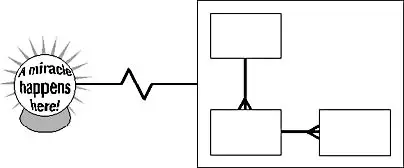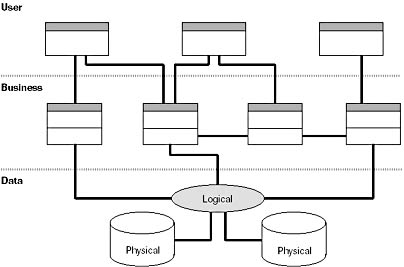
Figure 15-8 A technical architecture?
Typically, a layered architecture will be adopted to improve maintainability by isolating different implementation technologies from one another and from the core business logic of the application. It is vital that the technology for building components and for communicating among components be thoroughly tested and benchmarked. The robustness and performance characteristics must be understood so that sound designs can be created and technical risks managed.
Layering insulates an application from change. If used appropriately with an object-based approach, layering can reduce dependencies in project scheduling by insulating one part of an application from another.
The layering model can be as simple or as complex as required for the technical environment. For example, at TMS, we have used a 10-layer model to describe and categorize the elements of a complex Visual Basic distributed system. The model shown in Figure 15-9 is for a much simpler system.
Where the application will be physically partitioned, the deployment mechanisms should be understood. In particular, you should assess the process and the impact of repeated deployment. Operations staff who deploy systems should be aware of possible version conflicts and any special installation requirements. In particular, they should understand how the registration database is used by all the applications that they install.

Figure 15-9 A layered architecture